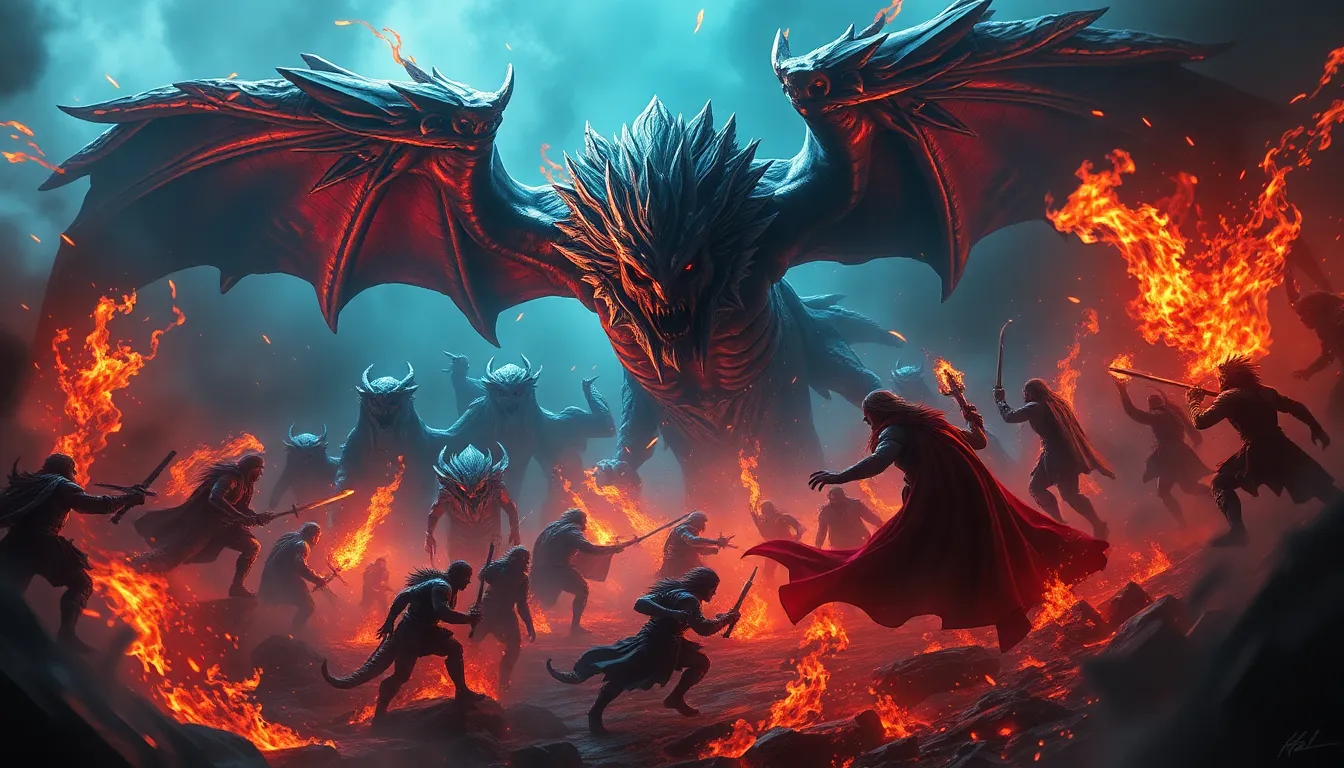End of the World Myths: What They Tell Us About Humanity
I. Introduction
End of the world myths are narratives that articulate humanity’s fears and hopes regarding existential threats. These myths often depict catastrophic events that lead to the destruction of the world or significant transformation. They serve as a lens through which we can examine the collective psyche of various cultures.
The significance of these myths spans across different societies, reflecting their values, fears, and aspirations. From ancient civilizations to modern societies, these narratives offer insights into how humanity grapples with the unknown. This article aims to explore what these myths reveal about human nature and societal concerns.
II. Historical Context of End of the World Myths
End of the world myths have deep historical roots, often intertwining with the beliefs and practices of ancient civilizations.
A. Ancient civilizations and their apocalyptic beliefs
1. Mesopotamian myths
The Mesopotamians believed in cyclical destruction and renewal, with myths such as the Epic of Gilgamesh, which reflects their views on mortality and the inevitability of death.
2. Mayan calendar and predictions
The Mayans famously created a calendar that some interpreted as predicting the end of the world in 2012. This belief drew significant media attention and sparked widespread fear and fascination.
B. Religious interpretations and prophecies
1. Christianity and the Book of Revelation
In Christianity, the Book of Revelation provides a vivid depiction of an apocalyptic scenario, detailing the final judgment and the battle between good and evil. This narrative has influenced countless followers and has been interpreted in various ways throughout history.
2. Hindu concepts of cyclical time and destruction
Hindu beliefs perceive time as cyclical, with the universe undergoing cycles of creation, preservation, and destruction. The concept of Kali Yuga represents the current age of decline, suggesting an eventual renewal.
III. Psychological Underpinnings of Apocalyptic Beliefs
Understanding the psychological aspects of apocalyptic beliefs can shed light on why these narratives persist.
A. Fear of the unknown and existential anxiety
Apocalyptic myths often arise from a fundamental fear of the unknown, encompassing existential questions about life, death, and the future.
B. Coping mechanisms for societal change and instability
In times of societal upheaval, end of the world myths can function as coping mechanisms, providing a framework for understanding chaos and instability.
C. The role of trauma and collective memory in shaping myths
Collective trauma can shape apocalyptic narratives, embedding societal fears into myths that resonate through generations.
IV. Cultural Reflections in End of the World Narratives
End of the world myths often mirror the fears and values of the society from which they originate.
A. How myths mirror societal fears and values
These narratives can reflect the anxieties of a culture, addressing issues like war, environmental degradation, and social injustice.
B. Case studies of myths from different cultures
- Norse Ragnarok: Represents the destruction of the world and the subsequent rebirth, emphasizing themes of fate and inevitability.
- Zoroastrian Frashokereti: Envisions a final renovation of the universe, where good triumphs over evil, highlighting moral dualism.
C. Influence of current events on the evolution of these myths
Modern conflicts, environmental crises, and technological advancements continue to shape and redefine apocalyptic narratives.
V. The Role of Technology and Media in Modern Apocalyptic Myths
In the digital age, the spread of end of the world narratives has transformed significantly.
A. The impact of digital media on the spread of end of the world narratives
Social media platforms facilitate the rapid dissemination of apocalyptic ideas, often amplifying fears and anxieties.
B. Dystopian literature and films: a reflection of contemporary anxieties
Films like “Children of Men” and literature such as “The Road” explore dystopian futures, mirroring contemporary societal concerns and fears.
C. The phenomenon of viral apocalyptic predictions in social media
Viral predictions often gain traction on social media, reflecting a collective anxiety about the future and the unknown.
VI. Environmental Concerns and the New Age of Apocalypse
Environmental degradation has become a significant focus in contemporary apocalyptic narratives.
A. Climate change as a modern end of the world myth
Climate change is often depicted as a harbinger of apocalypse, leading to fears of natural disasters and societal breakdown.
B. The connection between environmental degradation and apocalyptic narratives
As ecosystems collapse and species go extinct, narratives surrounding environmental apocalypse gain traction, reflecting deep societal concerns.
C. Activism and hope in the face of existential threats
Despite the grim narratives, environmental activism represents hope and a desire for positive change in the face of existential threats.
VII. The Intersection of Religion and Science in Apocalyptic Thinking
The relationship between religious beliefs and scientific predictions is complex and often contentious.
A. Conflicts and dialogues between religious prophecies and scientific predictions
Many religious groups interpret scientific findings through their own eschatological frameworks, leading to conflicts and dialogues.
B. How scientific advancements influence or challenge traditional myths
Scientific advancements can challenge traditional apocalyptic beliefs, providing new understandings of the universe and humanity’s place within it.
C. The role of faith in navigating existential crises
Faith can provide comfort and guidance as individuals and societies grapple with existential crises, often fostering resilience.
VIII. The Function of End of the World Myths in Society
End of the world myths serve various functions within society, impacting social dynamics and moral frameworks.
A. Social cohesion and the creation of in-group vs. out-group dynamics
These myths can foster social cohesion among groups while simultaneously creating divisions between ‘believers’ and ‘non-believers.’
B. Myths as a means of moral and ethical reflection
End of the world narratives often provoke moral and ethical discussions, prompting societies to reflect on their values and actions.
C. The potential for positive change and renewal stemming from apocalyptic beliefs
Amidst fears of destruction, these myths can inspire movements for positive change, encouraging societies to strive for renewal and improvement.
IX. Conclusion
End of the world myths, while often viewed through a lens of fear and anxiety, reveal much about humanity’s hopes, values, and existential concerns. They serve as mirrors reflecting societal issues and as frameworks through which people can make sense of their experiences. As humanity continues to face challenges both ancient and new, these myths will likely evolve, inviting ongoing reflection about who we are and what we might become in the face of uncertainty.



